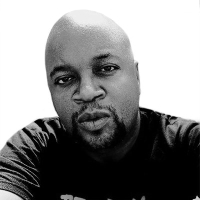“I do not consider myself a disco artist. I consider myself a singer who does disco songs.”
Donna Summer gave that quote to TIME magazine in 1976, and she would spend much of her career fighting against attempts to box her in. But the late diva, who would have turned 70 on December 31, worked hard for her legacy—one that is undeniably shaped by disco but just as clearly shaped disco itself—and so much more. For a generation that may be less musically connected to Janis Joplin and The Supremes, Donna Summer remains preeminent and her legacy is ineffaceable.
Summer’s music and image blazed a new path for pop stars; as Boomer-era popular music shifted from classic soul and rock into disco and post-punk, Donna Summer’s voice and forward-pushing studio craft laid the groundwork for post-disco ‘80s dance-pop, electronica and contemporary R&B. So many artists of the disco era were defined by their producers, and there’s been no shortage of recognition heaped upon the production of Giorgio Moroder and Pete Bellotte, but Donna Summer has remained an icon. She is a transcendent figure, a la The Jacksons and the Bee Gees, and the defining solo artist of that period.
It was announced in early December that pop megastar Janet Jackson will be inducted into the Rock and Roll Hall of Fame in 2019, and the news was met with cheers from fans and the predictable “that’s not rock” hand-wringing that has become par for the course with that particular institution’s annual honorees. But Jackson stands in the lineage of Donna Summer (inducted posthumously in 2013)—as does Madonna, who was inducted in 2008. Summer’s legacy is undeniable: she drafted a blueprint for what a pop superstar could be in the dance-driven post-disco world, and set the stage for such stardom in the MTV era as we know it.
“Love to Love You Baby” was a phenomenon of its era, a pulsing groove that featured Summer’s breathy, Marilyn Monroe-esque vocals over Moroder’s visionary soundscape. It became the song that made Donna Summer a superstar, and it inspired a wide swath of contemporaneous artists to explore burgeoning synth and dance sounds.
“One day in Berlin, [Brian] Eno came running in and said, ‘I have heard the sound of the future,’” David Bowie said of his first impression of Summer’s 1977 hit “I Feel Love.” “And I said, ‘Come on, we’re supposed to be doing it right now.’ He said, ‘No, listen to this,’ and he puts on ‘I Feel Love,’ by Donna Summer. Eno had gone bonkers over it, absolutely bonkers. He said, ‘This is it, look no further. This single is going to change the sound of club music for the next 15 years.’ Which was more or less right.”
After a stint fronting a local rock band named Crow, Summer left her hometown of Boston for a stint performing in Hair! in Munich, where she’d married Austrian actor Helmut Sommer, had her daughter Mimi, and linked with Moroder. They recorded the soon-to-be-smash in “Love to Love You Baby,” and by the time Summer returned to the United States in 1975, she was a star. Her highly sexualized image became a double-edged sword: it made her a disco icon but also brought puritanical derision from figures like Rev. Jesse Jackson. But it didn’t slow her appeal or her artistry—Summer would churn out ten Top 10 hits during her 1975-1980 run on Casablanca Records, and Bad Girls is one of the most definitive albums of the late-1970s.
She starred in 1978’s disco-musical Thank God It’s Friday and appeared in her own nationally televised special the following year, but was frustrated with Casablanca wanting her to focus on disco records. She left the label in 1980, signing with Geffen Records and sustaining a run of pop hits that included “The Wanderer” and “She Works Hard for the Money.”
Summer became a born-again Christian after a period of depression and divorce in the early 1980s led to a suicide attempt. “I had my daughter, and during that period my marriage broke up, and I was alone,” Summer said during an Entertainment Tonight appearance in 2008. “I was staying up at night, and I would go out and work, and I was up with her and maybe getting two or three hours of sleep a day—it was scary. I just couldn’t deal with another minute of it. I was on my way out the window and got caught in the curtain. The maid opened the door at exactly that time. Thank God that lady came because I would be gone today.” Her musical reinvention and religious conversion made for turbulent times, and Summer’s commercial inconsistencies and personal transitions are well documented.
In navigating a maze of bias and bigotries, Summer’s take on race could be frustratingly incognizant (“I don’t see myself through color, I see myself as a person who happens to have color” she told The Telegraph in 2008). And there was a rumored homophobic remark that sparked criticism and backlash for Summer at the height of AIDS hysteria. For years, she apologized and denied that she’d ever made the remark—having been recounted by some as a judgmental “Adam and Steve” disparagement about the epidemic.
“I’ve lost a lot of friends who have died of AIDS,” Summer would tell The Advocate in 1989. “I’m hurting as much as anyone else at the amount of people who are gone. Last year was an incredible year in terms of friends of mine who died—people who ran my first album, who were really close to me, beautiful guys, and I mean beautiful guys. It is devastating.”
She had undergone her early-1980s musical identity crisis and survived the 1990s as a venerated dance queen. Even as a disco-era star who was semi-successfully navigating the post-Michael Jackson pop landscape, Summer herself had inspired so much of the sound. As opposed to the urbane elegance of Chic or the slinky grooves of the brothers Gibb, Donna Summer’s brand of disco had always pointed more toward where synthesizer-driven production would go in the ‘80s and beyond. From early Madonna singles to Beyoncé’s millennium-era hits, Summer’s voice and production is evident in so much of contemporary pop music. Her reach set the template for pop divadom that includes everyone from Gloria Estefan to Lady Gaga. Donna Summer embodied a non-white, LGBTQ, urban culture that would reshape music, fashion and iconography—even as she wasn’t enthralled with the “disco” tag.
“You can only be trapped by something that’s stronger than yourself,” she observed in 1976. “And I don’t consider it to be stronger than myself. I don’t intend to let an image make me.”
Summer idolized Josephine Baker and Diana Ross, often bristling at the boxes she’d been put in after the success of her biggest disco singles. Her whispery vocals of the time belied a rich, dynamic singer who could tackle show tunes and soul with equal aplomb. She recorded the hit duet “No More Tears (Enough Is Enough)” with Barbra Streisand and fought to be defined outside of the framework that the industry had devised for black women. In an era of “Disco Sucks” and racially-segregated radio, Summer was forced to navigate “dance music” as a pejorative and “soul” as outmoded racial signifier. That she was able to become such an enduring pop figure is a testament to both her music and her unwillingness to let it be shackled by trends or tags.
We lost Donna Summer to lung cancer in 2012, and she’s been recognized by so many luminaries she’s influenced and inspired. On what would have been her 70th birthday, it’s a great time to revisit her music and examine her legacy, because she serves as a linchpin between the gospel-infused soul of the ‘60s and ‘70s to the dancefloor-driven throb of the ‘80s and ‘90s. Her contradictions and controversies indicate how much there is to be gleaned from the life and music of LaDonna Gaines, and her body of work reminds us how much richer our current cultural landscape is because Donna Summer helped forge it.





